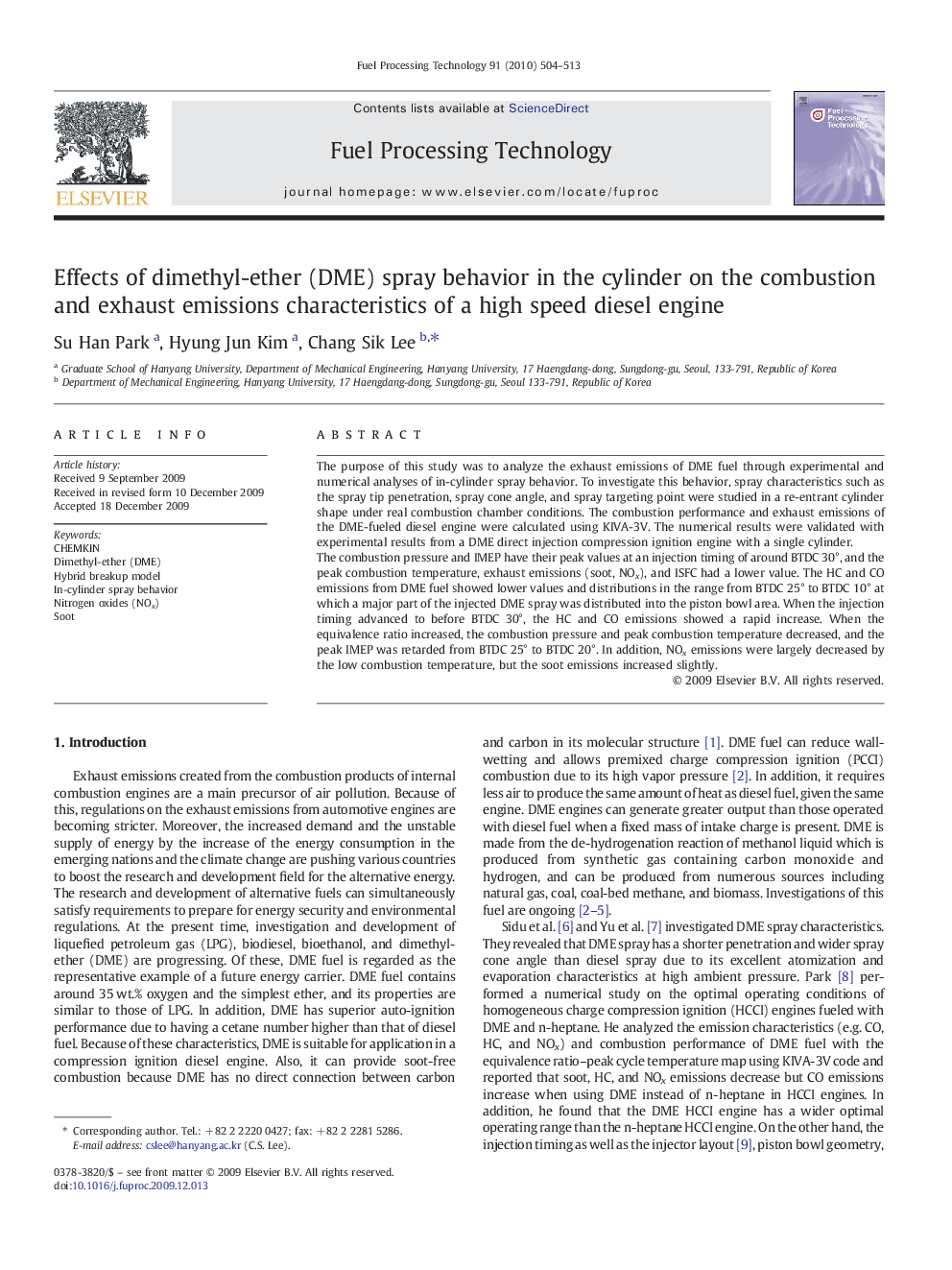| Article ID | Journal | Published Year | Pages | File Type |
|---|---|---|---|---|
| 210737 | Fuel Processing Technology | 2010 | 10 Pages |
The purpose of this study was to analyze the exhaust emissions of DME fuel through experimental and numerical analyses of in-cylinder spray behavior. To investigate this behavior, spray characteristics such as the spray tip penetration, spray cone angle, and spray targeting point were studied in a re-entrant cylinder shape under real combustion chamber conditions. The combustion performance and exhaust emissions of the DME-fueled diesel engine were calculated using KIVA-3V. The numerical results were validated with experimental results from a DME direct injection compression ignition engine with a single cylinder.The combustion pressure and IMEP have their peak values at an injection timing of around BTDC 30°, and the peak combustion temperature, exhaust emissions (soot, NOx), and ISFC had a lower value. The HC and CO emissions from DME fuel showed lower values and distributions in the range from BTDC 25° to BTDC 10° at which a major part of the injected DME spray was distributed into the piston bowl area. When the injection timing advanced to before BTDC 30°, the HC and CO emissions showed a rapid increase. When the equivalence ratio increased, the combustion pressure and peak combustion temperature decreased, and the peak IMEP was retarded from BTDC 25° to BTDC 20°. In addition, NOx emissions were largely decreased by the low combustion temperature, but the soot emissions increased slightly.
